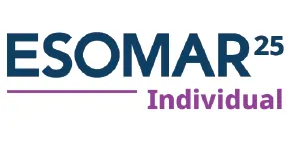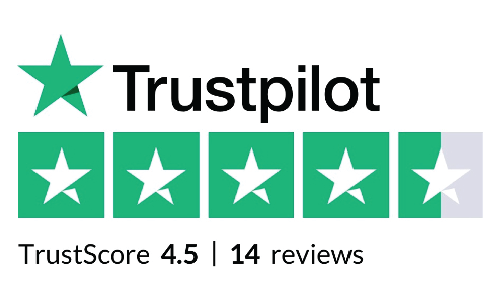
Unplanned downtime in manufacturing- a major pain, isn’t it? It messes up productivity and adds additional expenses. However, a CMMS (Computerized Maintenance Management System) can help you in this regard. Think of this software as a second pair of hands for your maintenance team. It automates work orders, provides preventive maintenance scheduling, and makes sure all the information about the equipment is stored. All of this information makes it easier for your team to identify potential problems ahead of time, preventing small issues from escalating into bigger ones, reducing downtime, and generally making the entire process function better.
Well, the proof is in the numbers. A study found one company that experienced a 54% drop in reactive maintenance after using a computerized maintenance management system, which means far fewer surprise breakdowns and a whole lot less stress! Not to mention, a CMMS can also reduce response times for your team by automating routine tasks and providing real-time data, which will save time and resources and ensure that production doesn’t slip off track.
Understanding CMMS Software
Computerized Maintenance Management Software (CMMS) is one type of software through which maintenance management tasks are carried out in a systematic manner. It is mainly used to plan, manage, and optimize maintenance activities. Centralized Maintenance Information—CMMS compiles all maintenance information on one platform, which enables good communication between teams. Its easy-to-use interface allows organizations to manage assets, schedule preventive maintenance, and respond to unplanned equipment failures accurately.
Reducing Unplanned Downtime
Natural downtimes that become operational break the business larger and cause a loss of time and money. This is where CMMS comes in to help avoid these problems. It monitors equipment functionality and maintenance records, as well as helps you understand risks. With this preventive measure, the maintenance team detects the problems in advance, preventing them from developing into a disastrous breakdown that can affect the business.
Moreover, CMMS software facilitates predictive maintenance strategies. It can easily foresee when the equipment will break based on historical data and trends. That enables maintenance to be scheduled when it is least disruptive and at lower costs. This same strategy not only increases equipment life but also increases operational reliability.
Automation for Boosting Efficiency
All scheduled maintenance tasks are automated with CMMS software, and human capital is released. Automation eliminates human errors, ensures the timely execution of tasks, and improves overall efficiency. This enables the maintenance teams to focus on intricate tasks that require higher priority and best utilize the human resources in a more efficient way. With automation, inventory management also becomes easier.
CMMS tracks both spare parts and inventory levels and when the quantity falls below the predefined level, it generates a purchase order automatically. This capability helps them perform maintenance activities in a continuous manner without any delays that may arise due to the availability of required resources. It provides automation that relieves operations while optimizing productivity.
Improved Communication and Collaboration
It is important for any maintenance team to have enough communication with all other departments in the facility. CMMS software centralizes all information so that everyone has live updates on what is going on; it is the place to share information and streamline collaboration. This kind of transparency leads to rebuilt alignment on a stronger foundation with less ambiguity.
CMMS allows maintenance teams to generate tasks, assign priorities, and track their status. All stakeholders are notified and alerted, ensuring crucial issues are kept in the queue. And this encourages faster problem-solving, reduced responsiveness, and productivity from the team.
Data-Driven Decision Making
Data is a foundation for making smart decisions. CMMS reports and analytics keep track of how maintenance is performing and provide insight into the condition of your assets. These reports enable stakeholders to identify patterns, evaluate asset quality, and rely on data for decision making. Quantifying key performance indicators (KPIs) allows organizations to improve maintenance strategies, allocate resources, and increase operational performance.
Streamlining Maintenance Scheduling
You need to plan very well for your projects so that they do not get hampered. Computerized Maintenance Management System software allows you to centralize everything to give you a calendar view of your maintenance schedule. Teams can tick off an agenda of action items, prioritize the order in which the work will get done, and allocate resources effectively.
Hence, a good schedule of maintenance works is conducted in an orderly manner and is least bothersome to your daily processes. This allows for timely maintenance in a methodical way. What this does is ensure that the chances of unscheduled downtime are at a minimal level and, at the same time, the efficiency is at its max.
Conclusion
Considering the evolving industrial scenario, the organizations are quite clear with the notion that ignoring CMMS software is no longer an option. Utilization of this dynamic tool in maintenance management rationalization can result in reduced downtime, increased overall productivity, and enhanced efficiency in the enterprise environment.
CMMS software automates, streamlines, and improves communication to leverage data-driven insights and methods, to help organizations optimize operations, and to give them a competitive edge. Embracing this technology is the first step toward a present and future where maintenance management is more efficient, productive, and sustainable.
Disclaimer: This post was provided by a guest contributor. Coherent Market Insights does not endorse any products or services mentioned unless explicitly stated.





